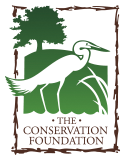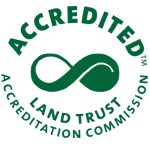Watershed Basics
By understanding essential watershed topics, we can better contribute to the health of rivers and streams in our neighborhoods. Explore the connections between land and water, discovering how everyday actions shape the health of nearby waterways.
What is a
Watershed?
Simply put, a watershed is an area of land that drains rain water to a particular body of water.
Most rainwater that falls onto land eventually finds its way to a river, stream, lake, pond, or wetland. A watershed is the area of land that funnels this rainwater into a common body of water, such as the DuPage River, Salt Creek, Fox River, or Des Plaines River, to name a few. Since all land is part of a watershed, every person in the world lives within one. Watersheds come in all sizes—from your neighborhood that drains into a creek to a sizable part of the country that feeds into the Mississippi River. Local streams, ponds, wetlands, neighborhoods, streets, and nearby farmland are all part of a watershed.

Watershed graphic by Lake County Stormwater Management Commission.
Stormwater:
Rain, Snow & Ice
Stormwater is rainwater or melted snow that flows over surfaces like roads, rooftops, and lawns, unable to soak into the ground. As it travels across land, it collects pollutants and carries them into storm drains and detention basins, eventually reaching waterways. Unmanaged, stormwater runoff threatens rivers and streams by introducing contaminants that degrade water quality and harm aquatic life.
Our actions on the land directly affect the health of nearby bodies of water. To minimize the negative impact of stormwater runoff, we can increase areas for rain to absorb into the ground and reduce pollutants across the landscape.





